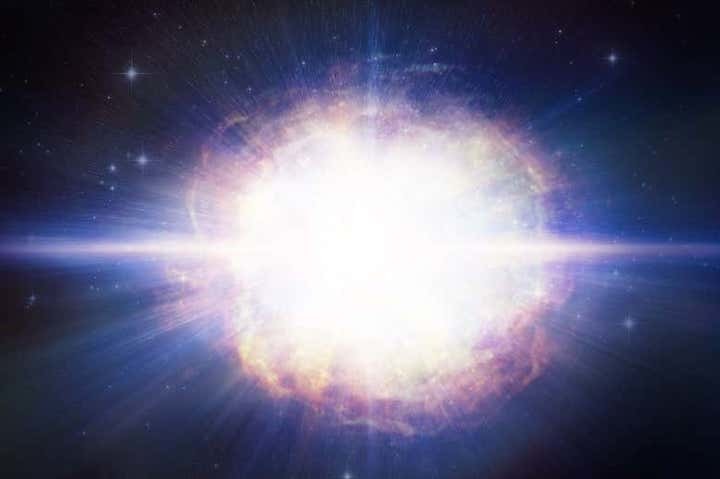14.04.2020

Credit: M. Weiss
This explosion puts the “super” in supernova. A blast about 4.5 million light-years away has released about 10 times more energy than the sun will emit in its entire lifetime, making it the most powerful supernova ever spotted.
“Until now it wasn’t clear that explosions this powerful were even possible,” says Edo Berger at the Harvard-Smithsonian Center for Astrophysics in Cambridge, Massachusetts. He and his colleagues found the supernova, called SN2016aps, using the Panoramic Survey Telescope and Rapid Response System in Hawaii.
Not only is SN2016aps the most powerful supernova ever spotted, it is the longest one we have found. “We found this more than three years ago, and we’re still observing it – usually we only can track a supernova for maybe a few months,” says Berger.
To create a supernova this bright and long-lasting, the star that exploded must have shed a shell of material making up about half of its mass before it blew up. When the explosion smashed through the shell like a wrecking ball at a speed of about 4600 kilometres per second, it would have created an extreme blast of radiation.
“The big question mark is, how did a star, about a decade before it exploded, lose half of its mass? It’s not something we see in the models,” says Berger.
Models of this type of supernova predict that it should shed a shell of mass thousands of years before exploding, but the observations show that the shell was still so dense and close to the central blast that it must have been ejected within a few decades of the supernova.
Explosions like this one could help us learn about the supermassive stars that may have existed in the early universe.
“We don’t have stars like this in our own galaxy, so the only way we can find out about these stars is by looking for these really exotic explosions and then sort of recreate the crime scene to figure out what it was up to before it exploded,” says Berger.
The fact that this explosion was so bright means we may be able to find more scenes of huge stars’ demises even further away.
Quelle: NewScientist
